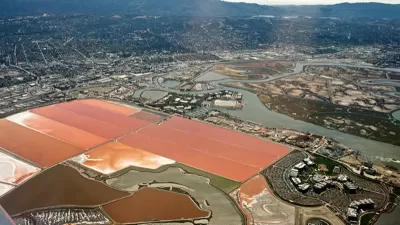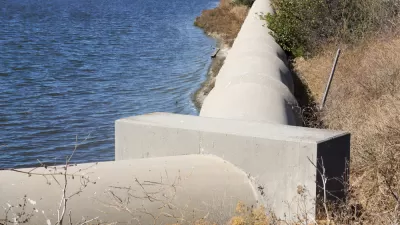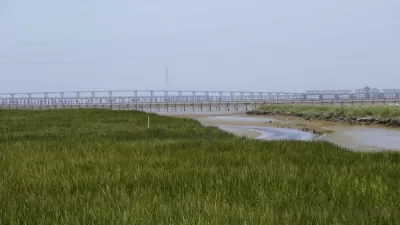The San Francisco Bay Area serves as a case study, that applies in places like Louisiana as well, of how mud shortages compound the threats of sea level rise.

John Upton reports on the surprising panacea in the effort to adapt to rising sea levels in the marshlands of the San Francisco Bay Area. John Upton explains the problem:
Marshes capture mud from water to grow and sustain themselves. A worsening shortage of mud floating in San Francisco Bay and its waterways is contributing to erosion. It’s threatening plans to block flooding from sea level rise through the restoration of wetlands in the Bay Area, where homes and office buildings are packed into low-lying areas.
Meanwhile, scientists are quickly realizing the pressing need for these projects to be successfully implemented.
The article goes into great detail in describing the critical role of mud to habitat in the San Francisco Bay Area, though the problem is also rampant along the Louisiana coastline.
According to Upton, 42,000 acres of wetlands have been restored in the Bay Area since 1999, when Bay Area agencies released a plan to restore 100,000 acres of wetlands. More help could be on the way:
Voters in the nine Bay Area counties in June will consider imposing a new annual property tax [pdf] of $12 per parcel to reduce water pollution and help fund an acceleration of marsh restorations. Some of the funds could be spent addressing the sediment shortfall. The tax would raise about $25 million a year — “a fraction of what is needed,” a Contra Costa Times editorial noted last week.
FULL STORY: Mud Shortage Eroding California’s Climate Defenses

Study: Maui’s Plan to Convert Vacation Rentals to Long-Term Housing Could Cause Nearly $1 Billion Economic Loss
The plan would reduce visitor accommodation by 25,% resulting in 1,900 jobs lost.

North Texas Transit Leaders Tout Benefits of TOD for Growing Region
At a summit focused on transit-oriented development, policymakers discussed how North Texas’ expanded light rail system can serve as a tool for economic growth.

Why Should We Subsidize Public Transportation?
Many public transit agencies face financial stress due to rising costs, declining fare revenue, and declining subsidies. Transit advocates must provide a strong business case for increasing public transit funding.

How to Make US Trains Faster
Changes to boarding platforms and a switch to electric trains could improve U.S. passenger rail service without the added cost of high-speed rail.

Columbia’s Revitalized ‘Loop’ Is a Hub for Local Entrepreneurs
A focus on small businesses is helping a commercial corridor in Columbia, Missouri thrive.

Invasive Insect Threatens Minnesota’s Ash Forests
The Emerald Ash Borer is a rapidly spreading invasive pest threatening Minnesota’s ash trees, and homeowners are encouraged to plant diverse replacement species, avoid moving ash firewood, and monitor for signs of infestation.
Urban Design for Planners 1: Software Tools
This six-course series explores essential urban design concepts using open source software and equips planners with the tools they need to participate fully in the urban design process.
Planning for Universal Design
Learn the tools for implementing Universal Design in planning regulations.
City of Santa Clarita
Ascent Environmental
Institute for Housing and Urban Development Studies (IHS)
City of Grandview
Harvard GSD Executive Education
Toledo-Lucas County Plan Commissions
Salt Lake City
NYU Wagner Graduate School of Public Service




























